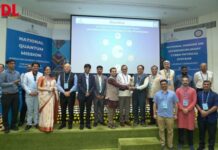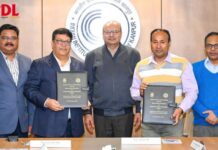 Inclusive teaching means recognising, accommodating, and meeting the learning needs of all students. The session focused on strategies and methods to make learning more holistic, while also trying to make it inclusive, not just within classrooms, but in the society as a whole
Inclusive teaching means recognising, accommodating, and meeting the learning needs of all students. The session focused on strategies and methods to make learning more holistic, while also trying to make it inclusive, not just within classrooms, but in the society as a whole

L K Kandpal
Principal, New Digambar School, Indore
An inclusive classroom is one where students and staff alike recognise, appreciate, promote the diversity, and try to enrich the overall learning experience. In order to make a class inclusive, the system must encourage all learners, irrespective of gender, ethnicity, religious affiliation, socio-economic status, and personal beliefs to develop skills to understand and face the challenges of life.
 Prakash Choudhury
Prakash Choudhury
Principal, Prestige Public School,
Indore
As teachers, we should be like researchers and find whether a child is able to learn the way we teach him. And if he is not, we must find ways to help him learn the way he wants to.
 Sarita Manuja
Sarita Manuja
In-Country Advisor- Center for Assessment, Evaluation and Research, CBSE
Effective inclusion improves the education system for all students, regardless of their learning ability, race, linguistic ability, economic status, gender, learning style, ethnicity, cultural background, religion, family structure, and sexual orientation.
 Pradeep Pandey
Pradeep Pandey
Principal, Pioneer Convent School, Indore
We should make learning interesting and technology can be leveraged to achieve this goal. Inclusive learning is beyond giving equal opportunity to all. Inclusion is no longer a problem as all students are being enrolled in education. But, we have to make sure that they integrate well with each other. For better integration, the learning experience needs to be made interesting.
























